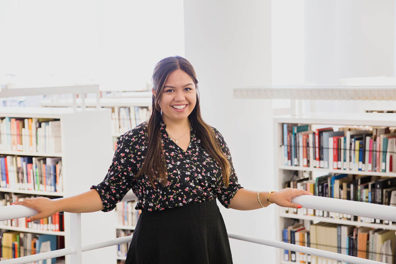
Yang Xiao, Prof. Dr. Sarah E. Fraser and Dr. Cao Qinghui inspect paintings at the National Palace Museum in Beijing. Photo: Wu Fang
China is a vast country, and bringing together scholars from its different regions who share common interests is no small feat. But this is exactly what is happening in a research project currently underway as part of the Getty Foundation’s Connecting Art Histories initiative. Through a series of mobile seminars, a young generation of Chinese scholars is taking a fresh look at shifts in modern art practice in China during the Sino-Japanese war (1937–1945) in a rare cross-country dialogue that also includes art historians from Europe and the United States.
The title of the project, The Ethnographic Eye, is a fitting one, as it describes a historical moment when Chinese artists who had been trained in European modernism re-engaged with their own traditions, aided by archaeology and ethnography. These artistic changes were spurred by geographic change, as the Chinese capital was relocated from Nanjing to Chongqing/Chengdu during the war. Celebrated figures such as Situ Qiao and Sun Zongwei came together in this new locale and found inspiration by looking to the past—centuries-old Buddhist monuments like the Dunhuang caves along the ancient Silk Road and the rituals of Tibetan, Miao, Qiang, and Yi groups whose realities were a far cry from the cosmopolitanism of China’s coastal centers.

Prof. Dr. Sarah Fraser giving a talk on the relation between ethnographic research and art production at the frontier during the wartime period. In the background: Han Leran (1898-1947), Dance before Labrang Monastery, 1945. Oil on canvas. 137 x 228 cm. Collection: National Art Museum of China, Beijing. Photo: Wu Fang
Now, some eighty years later, sixteen graduate students are retracing these artists’ steps under the leadership of art historian Sarah Fraser, an expert in Chinese art and identity during the Sino-Japanese war based at Heidelberg University in Germany. With Getty grant support, Fraser has been able to assemble an institutional collaboration with her counterparts at the Central Academy of Fine Arts in Beijing and the Arts College of Sichuan University in Chengdu and also include other senior scholars from the United States and China in a series of intensive research seminars.
Fraser notes that field work of these research meetings and having longer periods of joint study have made all the difference with the project. “We find our most successful and productive sessions are those held in major collections such as the Sichuan Provincial Museum, the Palace Museum, the Central Academy of Fine Arts Museum, and the Jianchuan Museum cluster, where we are able to access original works of art over an extended period of time,” says Fraser. “Participants can return to significant works, debate issues, and revisit larger questions. And during off hours in the evening students often schedule additional sessions amongst themselves to discuss their research questions against the backdrop of objects viewed during the day.”

Project participants discuss features of a Chinese Republican period painting at the National Palace Museum in Beijing. Painting: Viewing Paintings, 1918, Chen Hengque (Chen Hengke, 1876–1923). Hanging scroll, ink and color on paper, 87.7 x 46.6 cm. Collection: Palace Museum, Beijing. Photo: Wu Fang
This enthusiasm is echoed in the students’ observations. Yang Fanshu, an MA student at the Guangzhou Academy of Fine Arts, observed that “in comparison to a one- or two-day conference, we have much more time to exchange ideas.” And Jiang Yuehong, a PhD student at the Central Academy of Fine Arts in Beijing, remarked on the importance of visiting collections as a group: “By discussing objects together, we were able to expand our own views, think about new approaches and about others’ ways of seeing,” an approach that “can challenge us and provide us with new perspectives.”
Such direct encounters with objects are a central strategy of the Foundation’s Connecting Art Histories initiative. Other examples of such mobile seminars supported by Foundation grants include the Kunsthistorisches Institut’s study of cultural exchange in the Early Modern period stretching from North Africa to Samarqand. In addition, Harvard’s Villa I Tatti brought Chinese scholars of the Renaissance to Florence, many for the first time, to experience key monuments and paintings in person (more on these projects here).

Participants inspecting the painting collection of Xinan University in Chongqing (Sichuan Province) during a research seminar in December 2015. Photo: Wu Fang
This past December the Ethnographic Eye team assembled in Chengdu to examine pertinent art and archival collections. They also convened for an initial meeting in Beijing, where they received mentoring from senior scholars, shared their research with one another, and engaged in dialogue and debate while viewing important works of art. Looking ahead, the team will have one more mobile seminar in Southern China later this year and continue to share information with one another in the meantime through a comprehensive project website here.
“What we have started by using the Foundation’s support to bring together this team of art historians early on in their careers has the potential to impact the field greatly in the future,” says Fraser. “And that is exciting for all of us.”
Learn more about Connecting Art Histories and the full set of research projects supported so far by visiting the Foundation’s website.




Comments on this post are now closed.